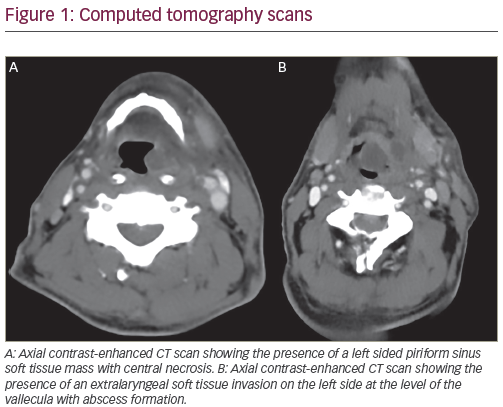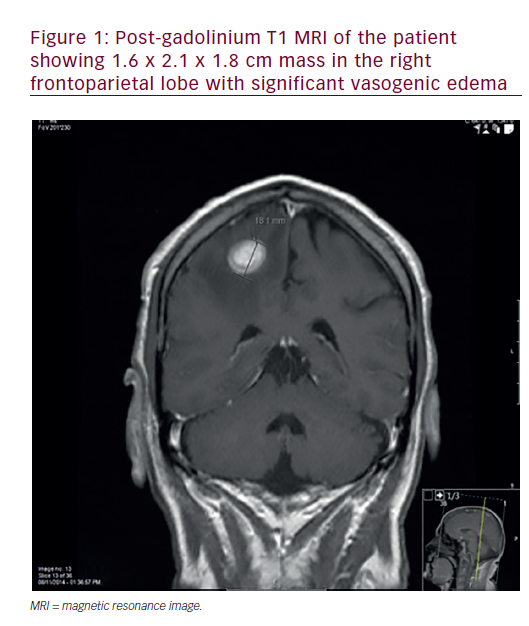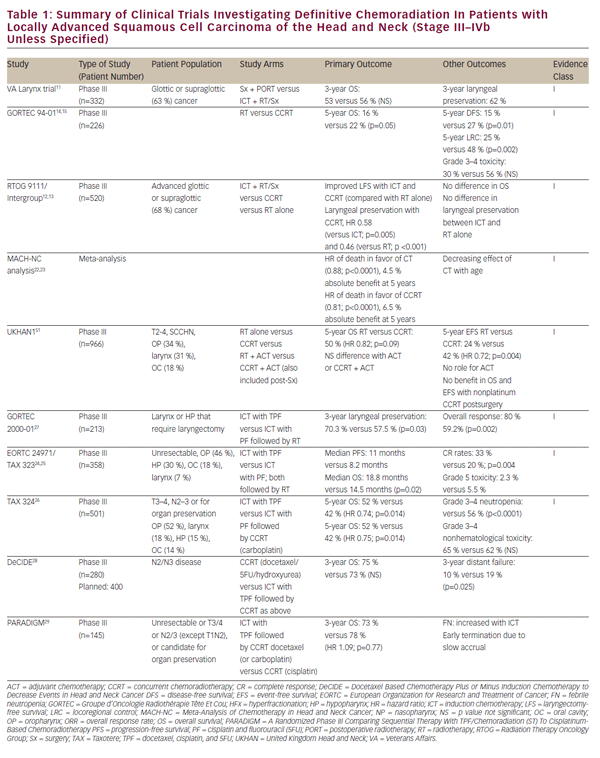Oesophageal and junctional adenocarcinoma may be advanced at presentation, and overall five-year survival remains dismal at between 10 and 20%.1 For patients presenting with localised disease, several advances in standards of care have emerged in recent years that have improved management. First, comprehensive staging with computed tomography (CT), endoscopic ultrasound (EUS) and fluorodeoxyglucose positron emission tomography (FDG-PET) permits exclusion of patients for curative therapy who might previously have undergone resection.1 Second, unassailable evidence supports the case for oesophagectomy to be performed in high-volume hospitals by high-volume surgeons, and this has been supported in many countries by action from payers, governments and the profession itself.3 Finally, neoadjuvant and adjuvant therapies are considered in most centres for patients with localised oesophageal adenocarcinoma and, although controversial, subgroups of patients may benefit.
The surgical principle for tumours at this site is to perform a wide clearance, achieve a negative margin (R0 resection) and perform a radical lymphadenectomy. The approach to achieve this is not standardised. The best results have been achieved in selected series by en bloc resection and lympadenectomy, which may achieve a cure rate of approximately 50%.4,5 However, there are variations in the route of approach, with proponents for transthoracic, trans-hiatal and minimally invasive approaches.6,7 Beyond good-quality cancer surgery there are three avenues that may improve outcomes in oesophageal and junctional adenocarcinoma, and these will be the focus of this article: first, the use of chemotherapy with or without radiation therapy in multimodal protocols; second, the use of biological imaging with FDG-PET scans to develop novel protocols that are based on pre-operative assessment of tumour response; and third, the application of new biological therapies – in particular tyrosine kinase inhibitors. Neoadjuvant and Adjuvant Therapy
Chemotherapy
There have been three key studies in this area (see Table 1). An appropriately powered phase III randomised study of 467 North American patients, US Intergroup 0113, showed no benefit from a pre- and post-operative combination of 5-fluorouracil (5-FU) and cisplatin, with a two-year survival rate of 35% in the combination group compared with 37% in the surgery alone group and a median survival rate of 15 and 16 months, respectively.8 A complete pathological response was observed in 2.5% of cases. In contrast, a similarly powered study of 802 patients conducted by the Medical Research Council (MRC), OEO2, which randomised patients to two cycles of pre-operative cisplatin and 5-FU versus surgery alone, reported a significantly improved survival at two years (43 versus 34%) in the combined modality group and a median survival rate of 16.8 versus 13.3 months.9 The principal differences between the Intergroup and MRC study were that the total pre-operative chemotherapy administered was greater in the Intergroup trial, there was a longer delay to surgery (median 93 versus 63 days) and the median survival in the surgery alone arm was improved (16 versus 13 months). Notwithstanding the different outcomes in both studies, in the UK neoadjuvant chemotherapy is accepted as the standard of care, and in a current trial (OEO5) patients with resectable oesopahgeal and junctional adenocarcinoms are randomised to either two cycles of cisplatin and 5-FU pre-operatively or four cycles of etoposide, cisplatin and capecitabine (ECX).
The recent findings of the MRC Adjuvant Gastric Infusional Chemotherapy (MAGIC) trial provide further support for proponents of neoadjuvant chemotherapy.10 This phase III trial randomly assigned patients with resectable adenocarcinoma of the stomach, OGJ or lower esophagus to peri-operative chemotherapy and surgery (250 patients) or surgery alone (253 patients). Chemotherapy consisted of three pre- and three post-operative cycles of intravenous epirubicin and cisplatin and a continuous intravenous infusion of fluorouracil (ECF). Post-operative morbidity and 30-day mortality did not differ between the two arms (46 versus 45% and 5.6 versus 5.9%, respectively). Compared with patients receiving surgery alone, the patients on the trial regimen had significantly improved overall (p=0.009) and progression-free survivals (p<0.001). The five-year survival rate was 36% for combined modality therapy compared with 23% for patients with surgery alone. In the MAGIC trial, approximately 75% of patients had gastric tumours, 14% had tumours of the lower oesophagus and 11% had junctional tumours. The effect was consistent for each site, with a hazard ratio of 0.81, 0.44 and 0.75 for gastric, junction and oesophageal cancers, respectively. The principle of neoadjuvant therapy is supported by the MAGIC study, but the trial was not powered to address junctional and oesophageal adenocarcinoma, and therefore no grade A evidence is provided for tumours at these sites.
Neoadjuvant Chemoradiotherapy
The interpretation of trials of combination chemotherapy and radiation therapy (see Table 2) prior to surgery and meta-analysis is more difficult compared with trials using chemotherapy alone for several reasons. Only two of eight studies, both negative, appear adequately powered with over 200 patients; there is a mix of pathological types, adenocarcinoma and squamous cell cancer in all but one study; the total dose of radiation therapy administered, and treatment fractions, is different across trials; and interpretation of the only positive trial showing a benefit for multimodal therapy may be compromised by relatively small numbers, no cross-sectional imaging in pre-treatment staging and an outcome in the surgery alone arm (6% three-year survival) below standard benchmarks.1,11 Moreover, a large adequately powered Australasian study of 256 patients, 61% of whom had adenocarcinoma, failed to show a survival benefit for neoadjuvant chemoradiotherapy (four cycles of cisplatin plus 5-FU 35Gy/15 fractions).12
Notwithstanding the relatively tenuous data that they provided, these trials have resulted in the widespread adoption of combination chemotherapy and radiation therapy, particularly in the US. Apart from the trial by St James’ Hospital in Dublin, proponents of this approach also cite other supportive data:
- meta-analysis;13
- in the negative Austalasian study, cancer outcome benchmarks including R0 resection rate (80 versus 59%) and node negativity (67 versus 43%) were significantly better in the multimodal versus surgery alone group, respectively;12
- in the University of Michigan trial of patients powered for median survival, overall survival was 30% better in the treated (cisplatin plus 5-FU and vinblastine 45Gy/1.5 Gy fractions) arm versus the surgery alone (p=0.15) arm;14
- a phase III trial that recruited 56 patients of a planned 475 before closing due to poor accrual showed a median survival of 4.48 years versus 1.79 years, favouring the treated group (cisplatin plus 5-FU 56Gy/1.8Gy per fraction);15 and
- evidence that patients achieving a complete or major pathological response, seen in approximately 20–30% of traditional regimens, have an approximate 50% chance of cure.16,17
New approaches to increase the complete pathological response rate would appear to have a sound rationale. The addition of paclitaxel to cisplatin- and fluorouracil-based regimens have increased pathological complete response rates, but may result in significant toxicity.18,19 A recent study using a paclitaxel, carboplatin and fluorouracil chemoradiotherapy regimen in patients with stage II and III disease but with a reduced paclitaxel dose demonstrated acceptable toxicity, along with a complete pathological response rate of 38% and a complete resection rate of 96%.20
Fluorodeoxyglucose Positron Emission Tomography-directed Protocols
FDG-PET is increasingly becoming a standard of care in the staging of oesopahgeal and junctional adenocarcinoma.21 In preliminary studies a decrease in the standardised uptake value of FDG was evident following induction therapy in patients who went on to achieve a significant histomorphological response.22 These studies paved the way for the Metabolic response Evaluation for Individualisation of neoadjuvant Chemotherapy in oesophageal and oesophagogastric adeNocarcinoma (MUNICON) phase II study.23 In this prospective singlecentre trial from Munich, 119 patients with locally advanced adenocarcinoma of the distal oesophagus and OGJ were assigned to two weeks of cisplatin plus 5-FU-based induction chemotherapy. Those with decreases in FDG avidity, pre-defined as decreases of 35% or more at the end of the evaluation period and measured by PET, were defined as metabolic responders. Responders continued to receive neoadjuvant chemotherapy for 12 weeks and then proceeded to surgery. Metabolic non-responders discontinued chemotherapy after the two-week evaluation period and proceeded to surgery.
One hundred and ten patients were evaluable for metabolic response and 49% were classified as metabolic responders. One hundred and four patients underwent tumour resection (50 in the responder group and 54 in the non-responder group). After a median follow-up of two to three years, the median overall survival was not reached in metabolic responders, whereas median overall survival was 25.8 months in non-responders (p=0.015). The median event-free survival was 29.7 months in metabolic responders and 14.1 months in nonresponders (p=0.002). A major histopathological response defined as less than 10% residual tumour cells in the resected specimen was noted in 58% of the metabolic responders, but no histopathological response was seen in metabolic non-responders. This is an important study as it is the first clinical trial to incorporate early response evaluation to neoadjuvant chemotherapy as measured by PET into a treatment algorithm and lays the foundation for a phase III randomised trial to be conducted. Targeted Therapy in Oesophageal Adenocarcinoma
Elucidation of molecular pathways in oncogenesis has led to the development of targeted therapies that can potentially inhibit or reverse the progression of invasive disease. These targeted therapies include:
- inhibitors of the ErbB receptor family;
- vascular endothelial growth factor (VEGF) inhibitors;
- selective inhibitors of cyclo-oxygenase-2;
- matrix metalloproteinase inhibitors;
- cell-cycle regulators; and
- promoters of apoptosis.
The epidermal growth factor receptor (ErbB1 or EGFR) and the ErbB2 (HER2/neu) receptor represent the two main members of the tyrosine kinase type ErbB-receptors family. EGFR overexpression is associated with poor prognosis.24
Cetuximab is an anti-EGFR monoclonal antibody approved for the treatment of metastatic colorectal cancer and advanced squamous cell cancer of the head and neck, and a phase II study of cetuximab in combination with 5-FU, leucovorin and irinotecan in patients with untreated advanced gastric or OGJ adenocarcinoma, demonstrated activity of this treatment with an overall response rate of 44.1% with increased but acceptable toxicity.25,26 A phase II study to determine the feasibility and toxicity of the addition of cetuximab to paclitaxel, carboplatin and radiation for locally advanced oesophageal cancer demonstrated that cetuximab can be safely administered with concurrent chemoradiation with a complete clinical response rate of 70%.27
HER2/neu overexpression and gene amplification is also associated with a poor prognosis.28 Trastuzumab (herceptin) is a monoclonal antibody directed against ErbB2 receptor. A recent phase I/II trial of trastuzumab, paclitaxel, cisplatin and radiation for locally advanced, HER2-overexpressing oesophageal adenocarcinoma demonstrated that trastuzumab can be incorporated into a chemoradiotherapy regimen without an increase in toxicity, but due to small sample size it was not possible to determine whether the addition of trastuzumab improved loco-regional or distant control.29
Erlotinib (Tarceva) and gefitinib (Iressa) are orally active selective reversible inhibitors of EGFR tyrosine kinase. A recent phase II study of gefitinib monotherapy in advanced oesophageal adenocarcinoma demonstrated an overall clinical response rate of 11%.30 Microarray analysis on pre- and post-treatment tumour biopsies showed that gefitinib modulated the expression of multiple oncogenes, and decreased expression of Ki67 was also observed. The only published phase II trial of erlotinib studied 43 patients with advanced OGJ tumours and 25 patients with gastric cancers. Erlotinib was active in OGJ adenocarcinoma but inactive in gastric adenocarcinoma, with an overall response rate of approximately 10%.31
VEGF is the most potent EGF and is critical for angiogenesis.32 VEGF is overexpressed in 30%–60% of patients with oesophageal cancers, and over-expression of VEGF is associated with poor outcomes in patients undergoing curative resections.33 Bevacizumab (Avastin) is a recombinant humanised monoclonal antibody that binds to all isoforms of human VEGF, thereby neutralising VEGF and inhibiting its angiogenic activity.32 A multicentre phase II trial of bevacizumab, irinotecan and cisplatin in metastatic gastric and junctional adenocarcinoma patients demonstrated an overall response rate of 65%, and the median time to disease progression was improved by 75%.34 A caveat was that in this series the addition of bevacizumab to chemotherapy was associated with two cases of gastric perforation and 12 thromboembolic events have been reported.
The incorporation of anti-EGFR and anti-VEGF monoclonal antibody therapies (see Table 3) and EGFR tyrosine kinase inhibitors (see Table 4) into multimodal therapies for resectable oesophageal adenocarcinoma is ongoing, and results from these phase II trials are eagerly awaited. Should these trials yield positive results, the development of well-designed, adequately powered, multicentre phase III studies will be a priority.








